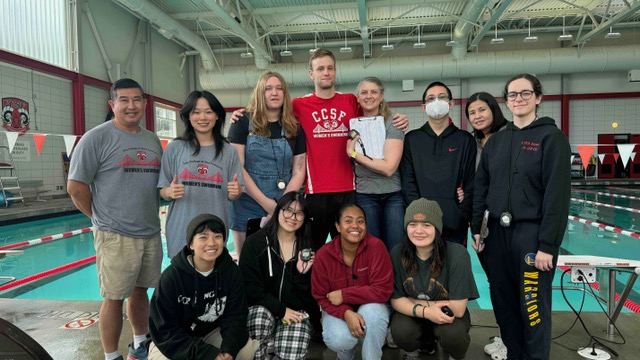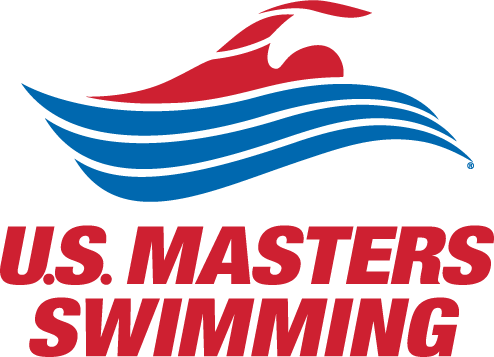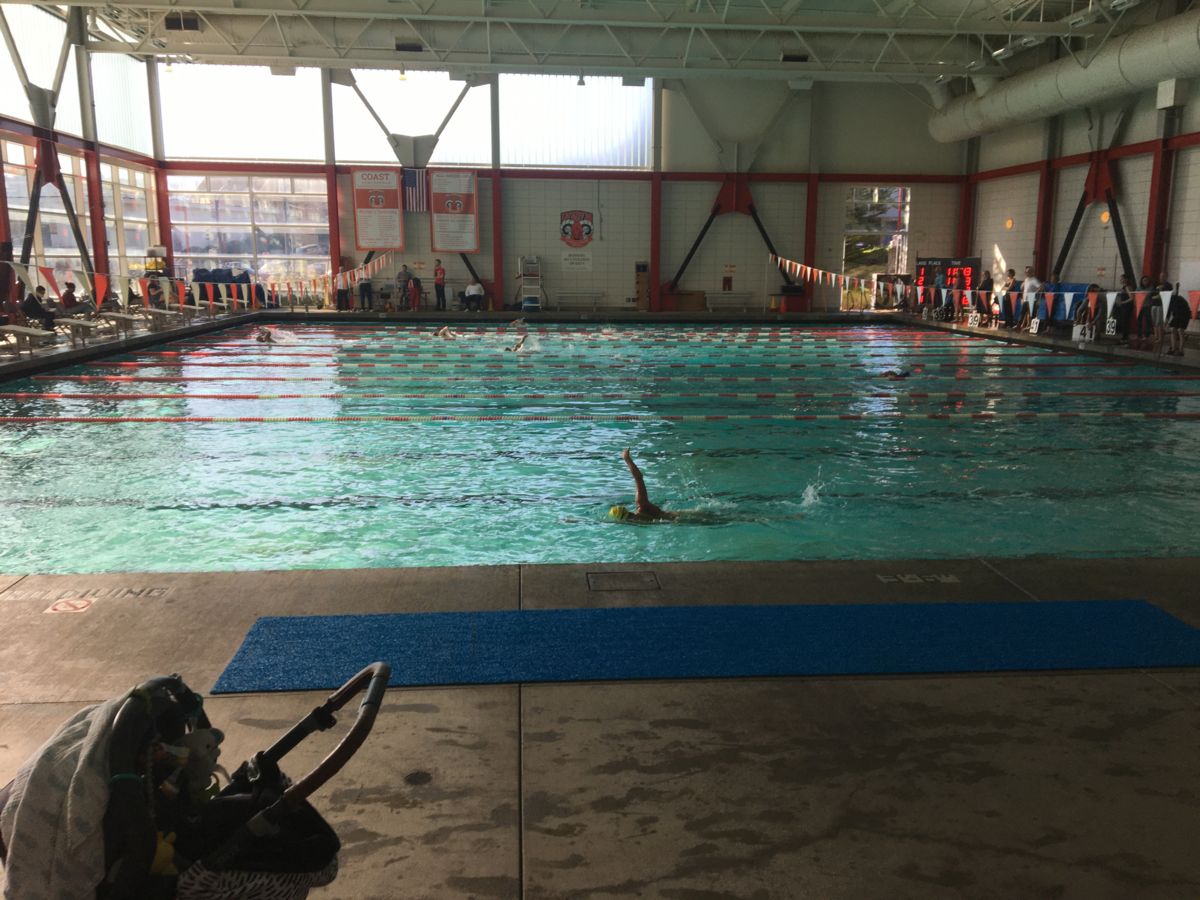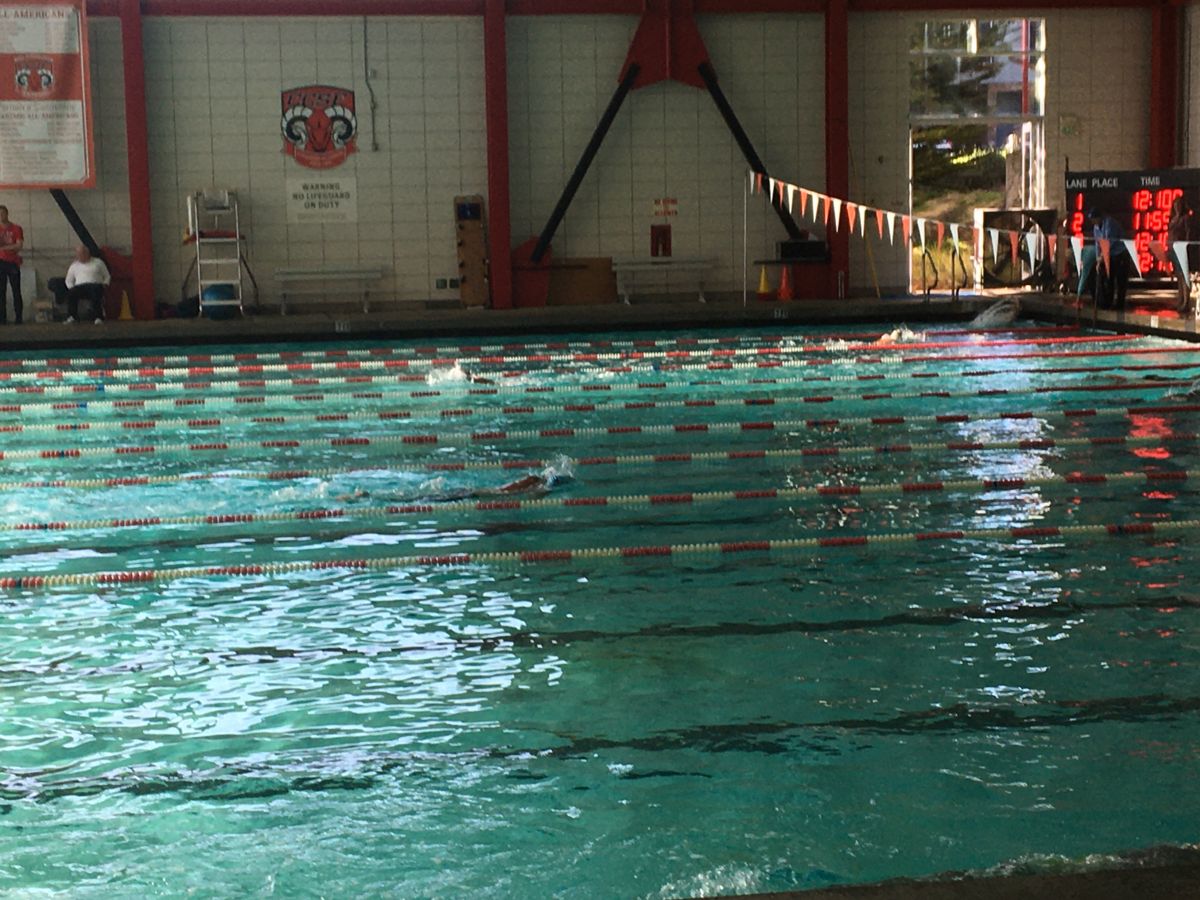My First Mile
By Linda Hepworth
I’m not a distance swimmer. My brother and sister both are. My sister explained it to me once, “I’m not that fast, but I can keep going.” I joined my sister in a 500-yard race at the 2014 Nationals. That was the longest race I had ever competed in. It was such a novel idea for me, that I ended up writing an entire book around that event. (See: The Water Beckons, by Linda Hepworth).
So, it seemed to be out of the blue when I suggested to my friend Annette, who is a distance swimmer, that we register for the City Mile to be held in San Francisco on February 25, and do it together. It’s a fun meet: one day – one event – the 1650-yard Freestyle. She was on board right away. Does the adage, misery loves company apply here?
I did not know much about the City Mile. I had seen it in The Update many times as it has been around since 2013. Since there were no SCY distance events before the championships, Michael Moore talked to Phong Pham, the CCSF aquatics director, about having a one-day 1650, with the income to be split between PacMasters and the CCSF women’s swim team, where Phong is the coach, and The City Mile was born.
To enter, you need a seed time. I had no idea how long it would take me to swim 66 laps, straight through. I looked up recorded times and recognized a name, someone who usually swims faster than I do. Starting with her time, and adding a minute, I came up with a seed time of 26 minutes and 25 seconds. It was a complete guess.
I checked with the meet director and asked if I had to swim the freestyle crawl during the race or if I could switch it up and swim backstroke (one of my favorite strokes). He replied that any stroke was legal in the freestyle. Phew!
To prepare, Annette advised me to practice a few 500s, maybe a 1000, and work up from there. I didn’t listen. The first chance I got, I jumped into the water and swam 2 laps. That was my warm-up. The excitement of swimming the mile made me want to get going. I glanced at the clock and pushed off.
Right away, an issue arose. My cap started creeping up with every flip turn. I paused at the wall for a second to pull it back down and noted to myself to have the cap on as low as possible for the actual race. I did not need a repeat of the unusual swim-cap-mishap that had happened to my teammate Annette during a 1500 (See: Freestyle Lap Thirteen in my book) to distract me.
Swim. Swim. Keep swimming. That’s all there is to it, I told myself. At regular practice, Coach has us do 3000 yards, so I knew I could do this, but it was the non-stop that worried me. My idea was to swim 10 laps, then turn over for a lap of backstroke to break the monotony, swim another 10 laps, etc. The math seemed like fun; backstroke on laps 11, 22, 33, 44, and 55. But as I swam along, I found that too confusing and abandoned it after the second lap of backstroke.
My first attempt took 28 minutes, judging from the clock on the wall. That was a start. The next week, I jumped in again. This time, I did a more thorough warm-up. Noting the time, I took off and stayed with the freestyle (crawl) the entire event. This time, I clocked 27 minutes. Better, but a full minute off my seed time. I was getting worried that I had entered too fast a time.
The day arrived. Annette and I drove into San Francisco. Since the heat and lane assignments were sent to all the swimmers the day before, we did not have to arrive early to warm up. Heat 1 was already in the water when we arrived. We found a spot on the bleachers, watched a few heats, and did a short warm-up swim. The pool water was cool, refreshing. There was plenty of warm up space available while the meet was going on.
I was in Heat 7. Lane 1. I was happy to be in the end lane, as I’ve been practicing in Lane 1 in my pool for a few months; it felt like home. And I could breathe toward the wall and not have to see the others swimming faster than I was. And there was a ladder close by…if the need arose.
Uncharacteristically, I started from the water; did not take the dive off the blocks. I was wearing new goggles and had not practiced with them on dives yet. I figured, in the words of my sister Jeri, when you’re doing 66 laps, losing those few split seconds that you gain from a dive, was not as important as knowing your goggles stayed in place.
Perhaps with all the excitement, I started out a little fast and by Lap 9, was seriously considering stopping. The thought occurred to me, but then I realized that I had bragged to everyone at the Post Office, including the Postmaster, that I was going to swim a mile. Arriving at work on Monday morning and admitting that I did not finish, had quit (!), was not an option, so I swam on, remembering my backstroke idea.
As I turned for Lap 11, I switched to backstroke and took some deep breaths, did an open turn, then went back to freestyle. I did another lap of backstroke at number 17, turned, and felt my freestyle rhythm kick in. I was going to be OK. I won’t be needing any more backstroke laps to save me, nor that ladder after all, not until the end, not until I had completed all 66 laps.
I placed second, behind Sally, who “lapped” me. She finished, and I still had a little more than 50 yards to swim. She’s a great gal, a fun competitor, very supportive, and a fast swimmer. Getting out of the water, I checked my time with our lane timer. Never having competed in this event before, I did my best time: 26 minutes and 47 seconds, 22 seconds off my seed-time guess. Later, I found out that the timers are members of the CCSF Women’s Swim team and that all the income from the meet would go to support their team.
Annette “counted” for me, and I’m doing the same for her. Now it’s Heat 10, and Annette is up on the blocks. True professional, she is. As always, she is swimming strong, steady. I kept track as the laps flew by and had the nicest conversation with another counter about the homemade bread she’s been baking lately. I was getting hungry listening to her. Another swimmer in Annette’s heat, swam the entire race using elementary backstroke, whip kick and all.
Anette told me later that her goggles had fogged, and she was only seeing a big white glare, had trouble finding the wall for turns, which meant she could not read the lap numbers on the counter very well. All sorts of challenges come into play in such a long race. And she did great! Time: 31 minutes, her seeded time, and she also placed second. We were consoled by the fact that we both got “lapped” – by very accomplished women. And we are right behind them!
Our GPS took us on a scenic route home, through St. Francis Wood, over hills, giving us views of the ocean and the Farallon Islands, allowing us to maneuver past the traffic of 19 th Ave. It was a very nice day and makes us want to do this crazy swim thing again.




